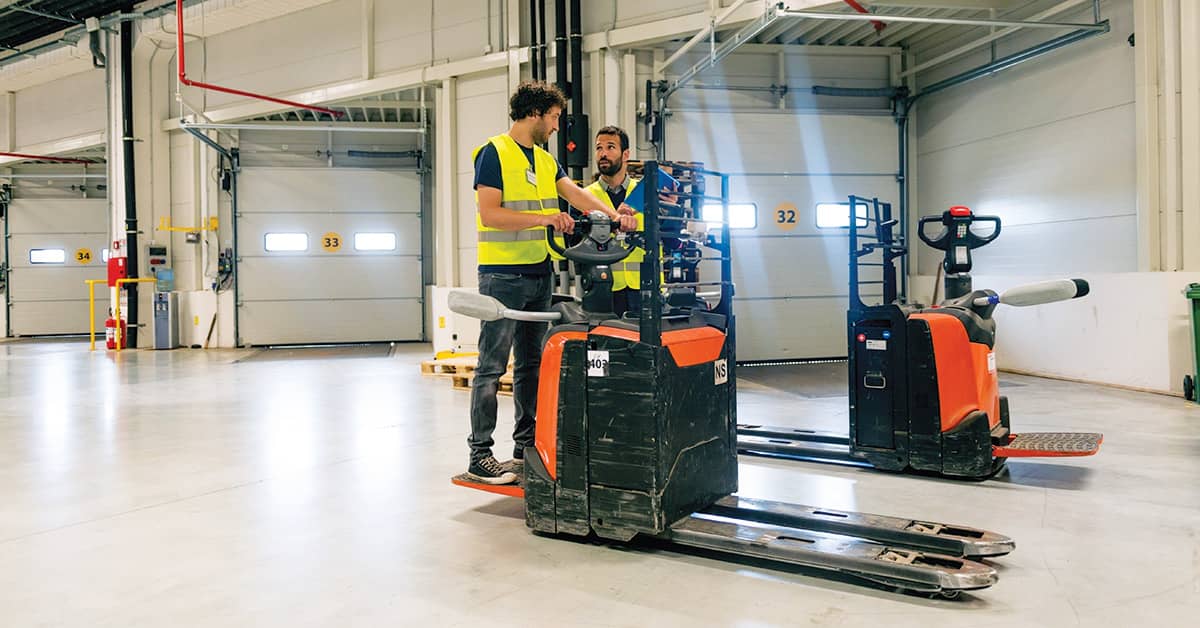Frequently asked questions on forklift operator training
Date Posted: 10/23/2023

Forklifts are indispensable in warehouses, construction sites, and manufacturing facilities, but they also cause some of the most serious injuries. To help prevent injuries, OSHA requires training forklift operators, but operators are only as good as their training. The following addresses some common questions on forklift operator training.
Who can conduct the training?
Operator training and evaluation must be conducted by persons who have the “knowledge, training, and experience” to train operators and evaluate their competence. The employer determines if potential trainers meet these qualifications. OSHA does not require taking certain classes or holding a particular certification.
The trainer does, however, need to have experience with the equipment. An OSHA letter of interpretation (dated 7/23/03) says that if the trainer has never operated the vehicle type or used a particular attachment, then the trainer does not have the necessary experience to train and evaluate others on that equipment.
Trainers must also be good communicators. A great forklift operator might not be a good trainer, although sending them to a train-the-trainer class might improve their training skills.
Can we use third-party trainers?
Many employers use third-party trainers. If going this route, verify that they have the “knowledge, training, and experience” to deliver training. Ideally, host the training at your facility so trainees can use your equipment in your environment.
If you send operators to an off-site training center, you’ll need to supplement the training with truck and workplace specific topics. Also, you’ll have to certify that each operator was trained and evaluated as required.
What should training cover?
Training must include formal training such as a lecture, discussion, interactive computer learning, videos, written material, and so on. Operators must also receive practical training, which means demonstrations performed by the trainer as well as practical exercises performed by the trainee. Finally, the trainer must evaluate each operator’s performance.
OSHA gives a detailed list of topics to cover during the training. The main categories are truck-related and workplace-related topics. Truck-related topics include things like controls, steering, visibility, capacity, and stability. Workplace topics includes information unique to your facility, like surfaces, ramps, typical loads, and pedestrian areas.
How do you determine if training was effective?
Employers decide how to measure success. For the classroom portion, you could give a written test or otherwise evaluate the trainees’ knowledge. For the practical segment, the trainee must be able to safely perform all job tasks.
For the performance evaluation, you need to observe operators performing their primary tasks. Make sure this is done in a safe place and under close supervision.
If the operator does not remember the training or understand the rules, then the training was not effective.
Is retraining required?
At least once every three years, each operator must be observed operating under actual workplace conditions, performing typical tasks. The operator must also be able to answer pertinent questions to demonstrate they have the knowledge to operate the forklift safely.
These evaluations must be conducted by someone who has the knowledge, training, and experience to evaluate the operator’s competence. Document the evaluation including the name of the operator, the date of the evaluation, and the identity of the person performing the evaluation.
What training documentation is required?
Create and maintain a record that includes name of the operator, the date of the training, the date of the evaluation, and the identity of the person(s) performing the training or evaluation.
In most states, employers do not need to issue a license or wallet card, though many employers do so. These cards can help supervisors quickly determine what equipment the employees are authorized to operate.
How Safety Management Suite Can Help
Keeping your trainees’ attention requires using engaging images along with written and spoken material. When OSHA requires covering complicated material like the stability triangle, using pre-made content can save the trainer a lot of time. The Training area of the J. J. Keller® SAFETY MANAGEMENT SUITE provides numerous resources that you can modify to meet your needs, including self-tests and other checks to verify comprehension.
E-mail Newsletter
Sign up to receive the weekly EHS Insider email newsletter for safety articles, news headlines, regulatory alerts, industry events, webcasts, and more.